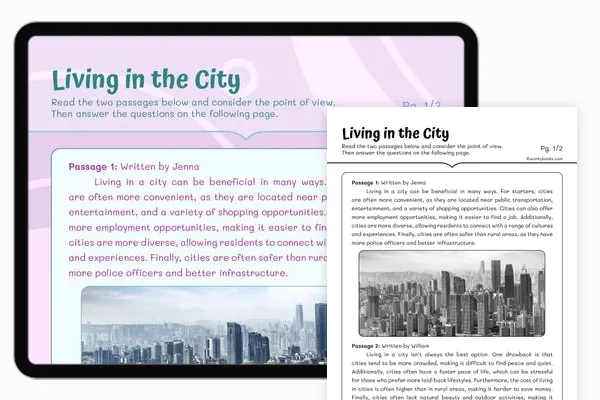The Eruption of Mount Vesuvius — Reading Comprehension
Grades
- 4
- 5
Standards
- RI.4.6
- RI.5.6
PRINT+DIGITAL RESOURCE
This learning resource is available in interactive and printable formats. The interactive worksheet can be played online and assigned to students. The Printable PDF version can be downloaded and printed for completion by hand.
About This Reader
This passage contrasts Pliny the Younger's eyewitness account of the Mount Vesuvius eruption with a modern historical textbook excerpt. The firsthand account vividly describes the unfolding disaster, capturing the fear and confusion of those experiencing the event. The secondhand account provides scientific data, historical context, and information about the long-term impact of the eruption. By comparing these accounts, students can identify differences in perspective, detail, and focus between contemporary and historical writings about the same event. This comparison enhances critical reading skills and meets CCSS.ELA-LITERACY.RI.4.6 standards for analyzing multiple accounts of historical events.
Perfect For:
👩🏫 Teachers
- • Reading comprehension practice
- • Auto-graded assessments
- • Literacy skill development
👨👩👧👦 Parents
- • Reading practice at home
- • Comprehension improvement
- • Educational reading time
🏠 Homeschoolers
- • Reading curriculum support
- • Independent reading practice
- • Progress monitoring
Reading Features:
📖
Reading Passage
Engaging fiction or nonfiction text
❓
Comprehension Quiz
Auto-graded questions
📊
Instant Feedback
Immediate results and scoring
📄
Printable Version
Download for offline reading
🔊
Read Aloud
Voice-over with word highlighting













